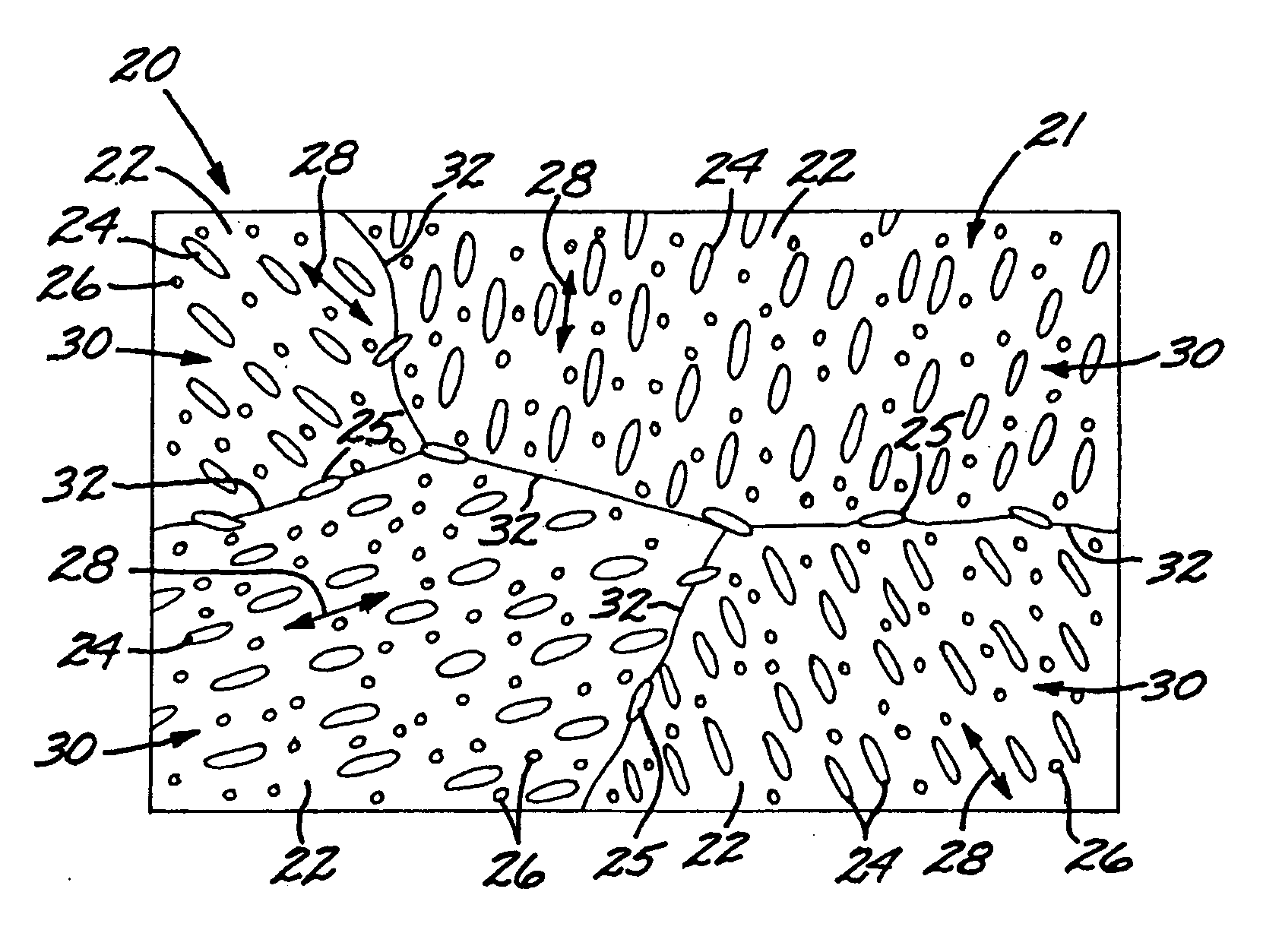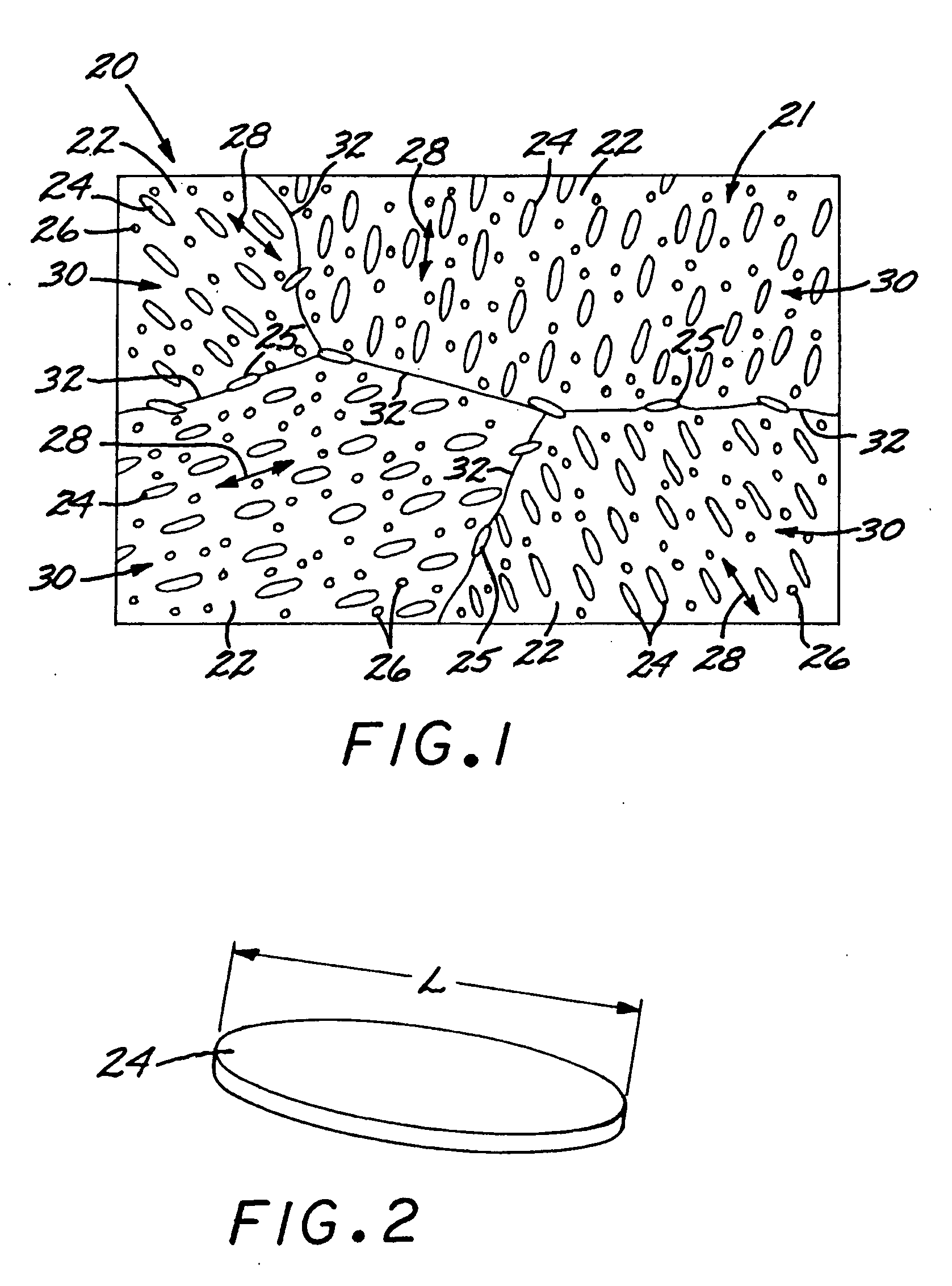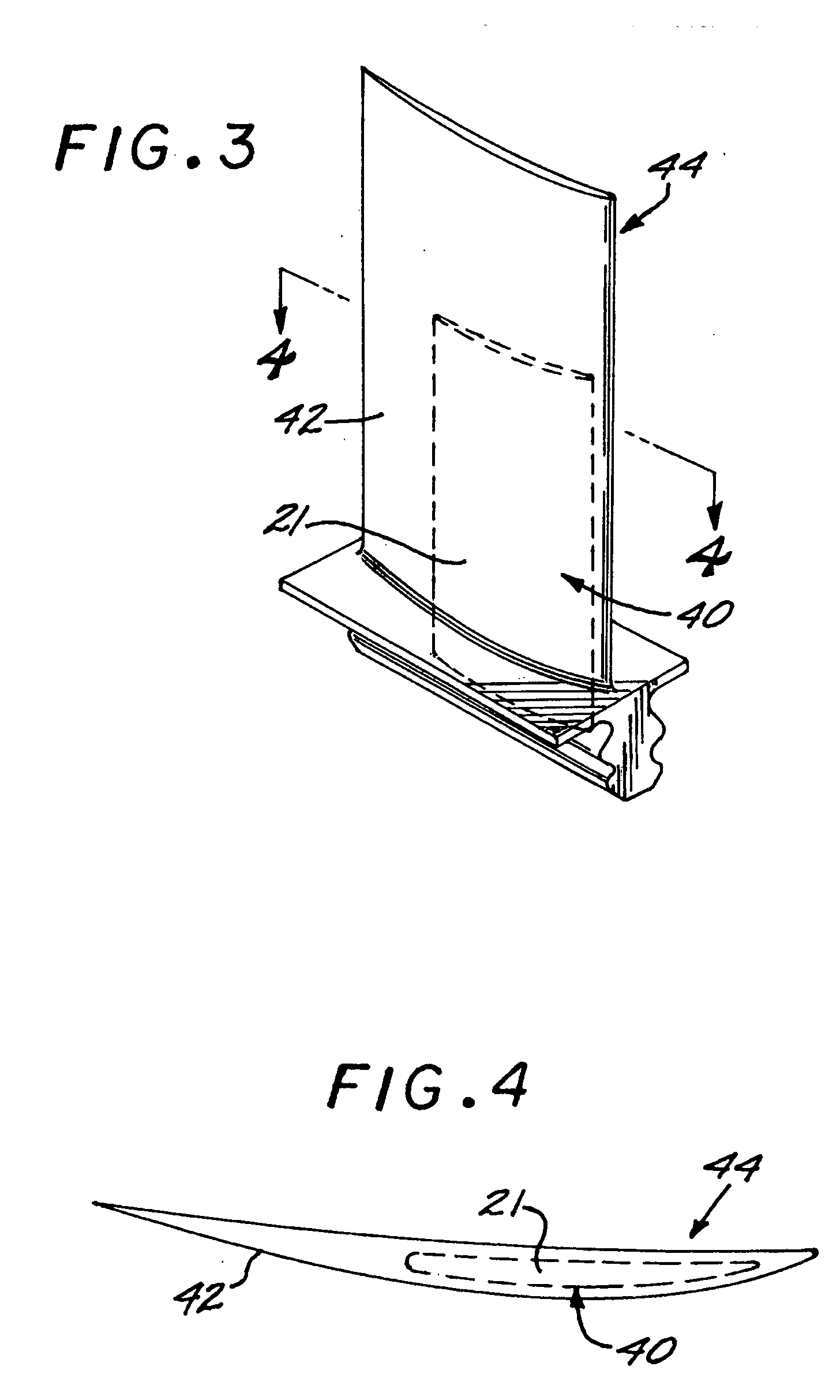Article having a dispersion of ultrafine titanium boride particles in a titanium-base matrix
a technology of titanium boride and titanium-base matrix, which is applied in the field of articles having a dispersion of ultrafine titanium boride particles in a titanium-base matrix, can solve the problems of limited solubility of boron in titanium, forming relatively large titanium boride particles that are detrimental to ductility and fatigue, and reducing so as to improve the elastic modulus of the material, reduce the incidence of irregularities, and reduce the effect o
- Summary
- Abstract
- Description
- Claims
- Application Information
AI Technical Summary
Benefits of technology
Problems solved by technology
Method used
Image
Examples
Embodiment Construction
[0034]FIG. 1 is an idealized microstructure of an article 20 including a microscale composite 21 formed of a polycrystalline titanium-base matrix 22 having a dispersion of fine platelike intragranular titanium boride particles 24 and grain-boundary titanium boride particles 25 therein. Optionally, there are oxide particles 26 dispersed in the matrix 22 as well. In FIG. 1, the oxide particles 26 are illustrated as smaller in size than the titanium boride particles 24 and 25. However, the oxide particles 26 may be of comparable size with the titanium boride particles 24 and 25, or of larger size than the titanium boride particles 24 and 25. (This idealized microstructure of FIG. 1 does not reflect the relative sizes or volume fractions of the constituents.)
[0035] The constituent elements comprise a titanium-base composition, boron, and optionally a stable-oxide-forming additive element. A titanium-base composition has more titanium by weight than any other element (although there may...
PUM
| Property | Measurement | Unit |
|---|---|---|
| Grain size | aaaaa | aaaaa |
| Grain size | aaaaa | aaaaa |
| Length | aaaaa | aaaaa |
Abstract
Description
Claims
Application Information
 Login to View More
Login to View More - R&D
- Intellectual Property
- Life Sciences
- Materials
- Tech Scout
- Unparalleled Data Quality
- Higher Quality Content
- 60% Fewer Hallucinations
Browse by: Latest US Patents, China's latest patents, Technical Efficacy Thesaurus, Application Domain, Technology Topic, Popular Technical Reports.
© 2025 PatSnap. All rights reserved.Legal|Privacy policy|Modern Slavery Act Transparency Statement|Sitemap|About US| Contact US: help@patsnap.com



